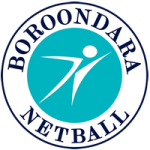Warming Up
The Warm-Up
Why warm up?
A pre-exercise warm-up:
- -warms your muscles by increasing the movement of blood through your tissues, making the muscles more supple;
- -increases delivery of oxygen and nutrients to your muscles by increasing the blood flow to them;
- -prepares your muscles for stretching;
- -prepares your heart for an increase in activity;
- -prepares you mentally for the upcoming exercise; and
- -primes your nerve-to-muscle pathways to be ready for exercise.
The warm-up is widely viewed as a simple measure to help prevent injury during exercise. While scientific studies are ongoing to define the best warm-up techniques to gain this injury-prevention advantage, the warm-up in general is firmly established as a key to exercising safely and effectively.
Ensuring an effective warm up
To make your warm up effective, you need to do movements that increase your heart rate and breathing, and slightly increase the temperature of your muscle tissue. A good indication is warming up to the point where you have raised a light sweat.
If you are exercising at a higher level than for general fitness, or have a particular sporting goal in mind, you may need a longer warm-up, and one that is designed specifically for your sport.
Resources:
- Click Netball Victoria Warm up & Recovery Guide
- Click Netball Australia The Knee program

